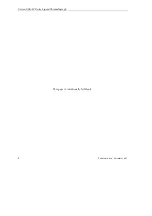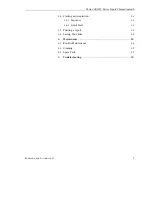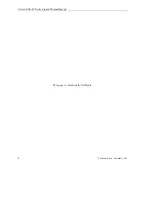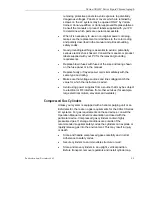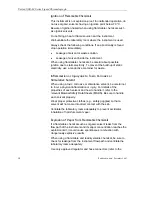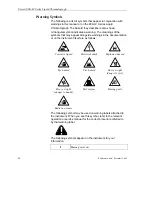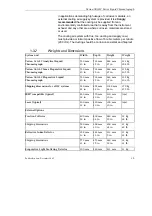
Varian 900-LC Series Liquid Chromatograph
Ultraviolet Radiation
900-LC Series Liquid Chromatograph systems that use an
ultraviolet light source have shielding to prevent radiation exposure
to personnel.
For continued protection:
•
Ensure that any protective lamp covers are in place during
operation.
•
Do not look directly into detector fluid cells or at the UV light
source. When inspecting the light source or fluid cell, always
use protective eye covering such as borosilicate glass or
polystyrene.
•
Ozone can be generated by radiation from source lamps.
Exposure to ozone can result in severe irritation to the skin,
eyes, and upper respiratory system. The maximum
permissible exposure level is 0.1 ppm (0.2 mg/m
3
). ALWAYS
ventilate the area surrounding the LC system such that the
concentration of ozone does not exceed the maximum
permissible level. All venting must be to outside air, never
within the building.
Flash Chromatography
The operator should be familiar with the physico-chemical
properties of the components of the mobile phase.
Only use solvents compatible with the LC system tubing and
fittings as certain solvents may cause weakening and leaks with
possible bursting.
Employ static measuring and static discharge devices to safeguard
against the buildup of static electricity.
Solvent Hazards
All solvents can create a hazard if they leak into the atmosphere.
Even small leaks in solvent supply systems can be dangerous. Any
leak (except that of air) can result in an oxygen-deficient
atmosphere, which can cause asphyxiation. The area in which
solvents are stored and the area surrounding the instrument must
be adequately ventilated to prevent such accumulations.
Publication date: December 2007
13




